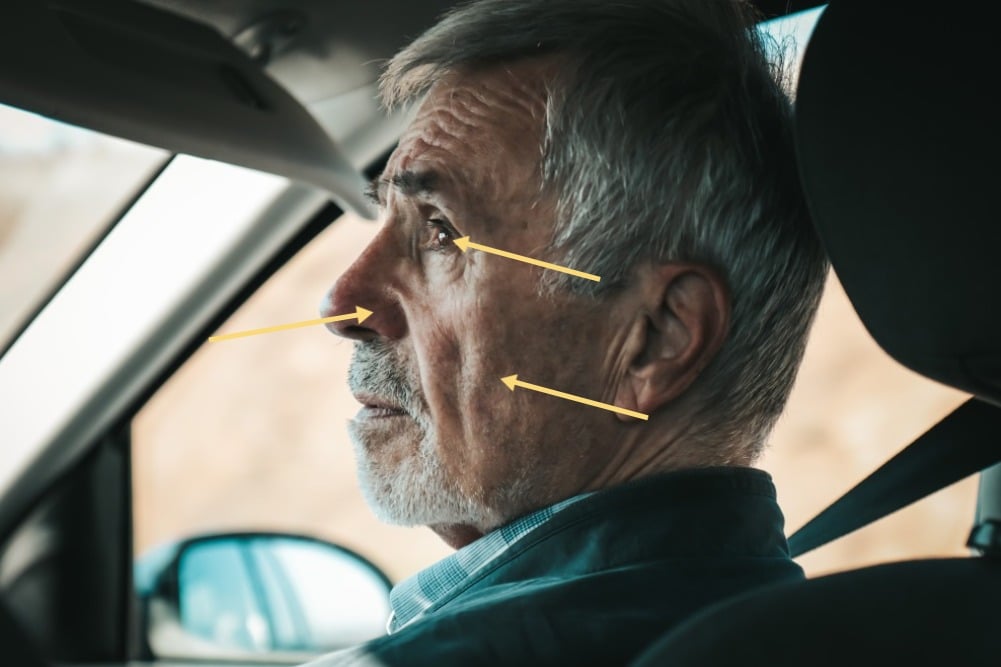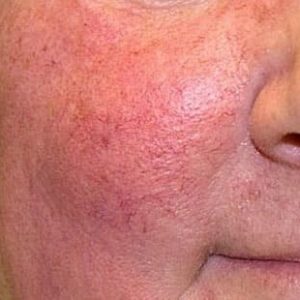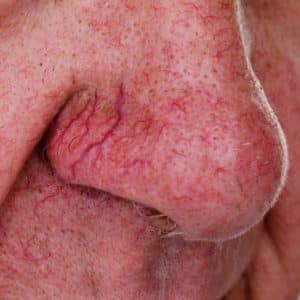
15 Dec How to Spot an Alcoholic Face
Alcoholism is an increasingly prevalent social issue that affects individuals of all ages, genders, and backgrounds. Unfortunately, the physical and mental effects of alcohol can often lead to addiction. A condition in which individuals become dependent on alcohol to cope with the pressures of life.
One of the most common signs of alcoholism is a change in physical appearance, specifically the face. The physical signs of alcoholism may not always be obvious. Therefore, it is essential to understand what some of the physical signs are.
What is an Alcoholic Face?
People who consume large amounts of alcohol regularly often undergo physical and psychological changes to the face. These facial changes are caused by long-term, heavy drinking. When alcohol is consumed, it is metabolized by the body and broken down into acetaldehyde. Acetaldehyde is a toxic compound that irritates the skin and damages its structure. This damage leads to wrinkles and other visible signs of aging. In addition, alcohol consumption can cause dehydration, making the skin look dry and flaky. Alcohol also impairs the body’s ability to produce collagen, which is necessary for healthy skin.
Facial Signs of Alcoholism
The effects of an alcoholic face can be both physical and psychological. Physically, the condition is characterized by wrinkles, dry and flaky skin, and a dull complexion. These physical changes of dry, wrinkled skin can lead to feelings of low self-esteem and embarrassment. In addition, those with alcoholic faces may have difficulty forming relationships or maintaining jobs due to the visible signs of their condition.


Broken Capillaries on the Face (especially the nose)
Alcohol causes redness and flushness on the face. This is caused by alcohol forcing the blood vessels in the face to expand and contract, pushing blood under the facial skin where it is thinner. Some people develop spider veins on their faces due to the blood vessels collapsing from being forced open and closed too many times. Spider veins can also develop in the eyes, causing a bloodshot appearance.
Skin Discoloration
An alcoholic’s skin may start to take on a grayish color. Long-term chronic drinking or binge drinking can cause a vitamin A deficiency, which the skin needs to maintain its normal healthy tone.
Yellowing of Eyes and Skin
Yellowing of the skin and eyes is a sign of jaundice. Jaundice is one of the most common symptoms of liver disease. It’s caused by an excessive amount of a substance called bilirubin in the blood. Bilirubin is a chemical that is released when red blood cells break down. The liver usually processes this waste product and flushes it into the digestive system, where it is excreted. If the liver isn’t functioning properly due to the damage caused by alcohol abuse, the bilirubin accumulates in the blood and body tissue, causing this yellow coloring.
Facial Swelling or Bloating
A swollen, bloated face can be a sign of alcoholism. This occurs because the skin is attempting to retain as much water as possible to offset the dehydration that occurs when the body processes alcohol. Alcohol also causes an inflammatory response in some people, which can exacerbate the appearance of facial bloating.
Drinker’s Nose
Drinkers nose, or rhinophyma, is a skin condition that makes the skin on the nose thicken and become bumpy. An enlarged nose and visible blood vessels usually accompany it. The condition is relatively rare and usually affects middle-aged and older adults with a history of heavy alcohol consumption. Drinkers’ noses are caused by a combination of factors, including excessive alcohol consumption, excessive sun exposure, and genetics.
Excessive alcohol consumption is the most common cause of drinkers’ nose. Alcohol is a vasodilator, which causes the blood vessels in the nose to expand and become more visible. Over time, this can thicken skin and develop a bumpy texture.
Additionally, alcohol can irritate the nose’s skin, leading to redness and swelling. The most common sign of a drinker’s nose is a thickened, bumpy texture on the nose. The nose may also become enlarged and have visible blood vessels.
Treatment Options
The first step in correcting the signs of an alcoholic face is to stop drinking alcohol. This can be difficult, so it is essential to seek professional help. Treatment for alcoholism can help a person remove alcohol from their life and stop any physical signs of drinking.
Once alcohol consumption has been reduced or stopped, the symptoms should start to improve. Additionally, lifestyle changes may be necessary to address the condition’s underlying causes.
If lifestyle changes are not enough, various treatments are available for the facial signs of alcohol abuse. You can apply topical medications such as corticosteroids and retinoids to your skin to reduce redness and puffiness. You can also use laser treatments and chemical peels to improve the skin’s condition.
Do All Heavy Drinkers Get Alcoholic Face?
Not all heavy drinkers show the signs of alcoholism on their faces. While research has found that heavy drinking is associated with a higher risk of developing these issues, the condition is not universal among heavy drinkers.
The facial signs of alcoholism are also linked to nutritional deficiencies caused by heavy drinking. Alcohol interferes with the body’s ability to absorb and process certain vitamins and minerals. They include vitamin A, vitamin C, zinc, and iron. As a result, those who drink heavily are more likely to suffer from nutritional deficiencies. This leads to skin problems such as the alcoholic face.
Having an alcoholic face is, therefore, a condition caused by a combination of factors, including genetics, nutrition, environment, and alcoholism. Hence not every heavy drinker will show these signs.
Help is Available at New Method Wellness
New Method Wellness is a comprehensive program designed to help individuals address their alcohol addiction. The program includes in-depth assessments, personalized treatment plans, and evidence-based therapies. It also provides access to experienced and licensed counselors and therapists. They can help individuals understand their addiction and develop strategies for managing their drinking.
We use various methods to spot an alcoholic face and those experiencing alcohol use disorder, such as:
- Observe physical features: We look for signs such as a red face, sunken eyes, or a dull complexion.
- Assess cognitive abilities: We ask questions to determine if the person’s cognitive abilities are impaired.
- Monitor behaviors: We observe behaviors such as drinking excessively or engaging in risky behaviors.
- Evaluate medical history: We review the person’s medical history to determine if there is a history of alcohol abuse.
- Assess emotional status: We assess the person’s emotional status to determine if they are exhibiting signs of depression or anxiety.
The program also offers support groups and other services to help individuals stay on track with their recovery. With the help of New Method Wellness, individuals can overcome their addiction and begin their journey toward long-term recovery.
If you or your loved one is struggling with alcoholism, contact us to learn more about how we can help.



